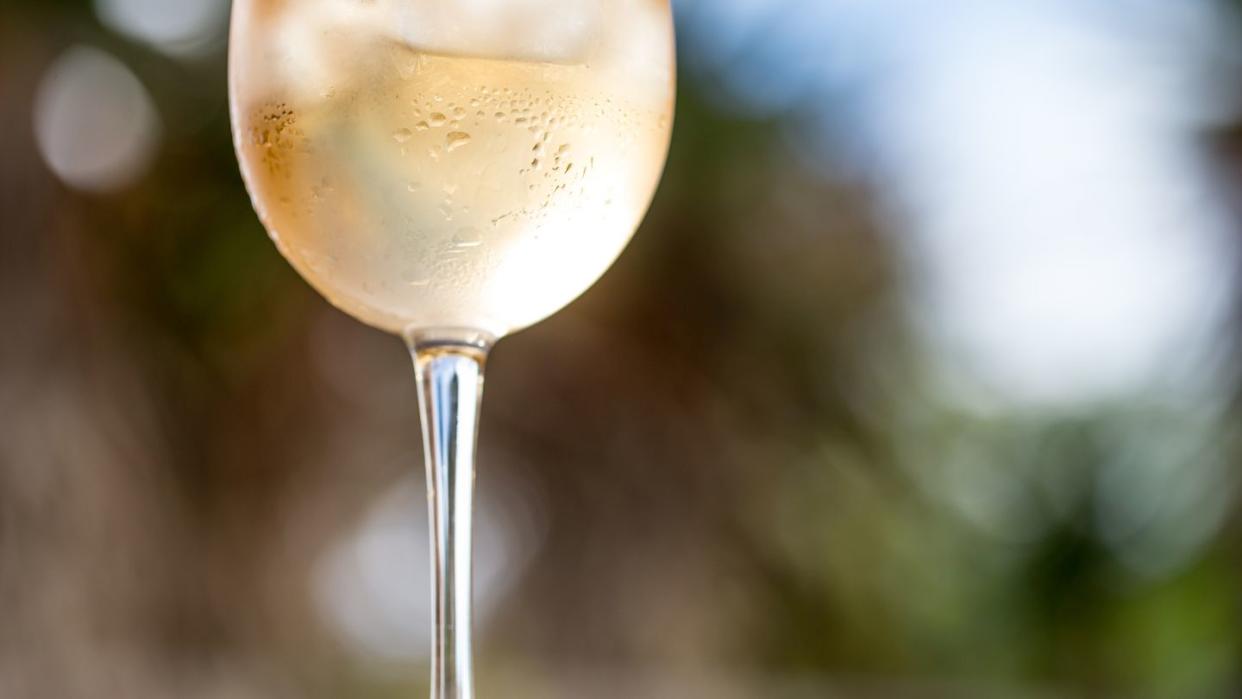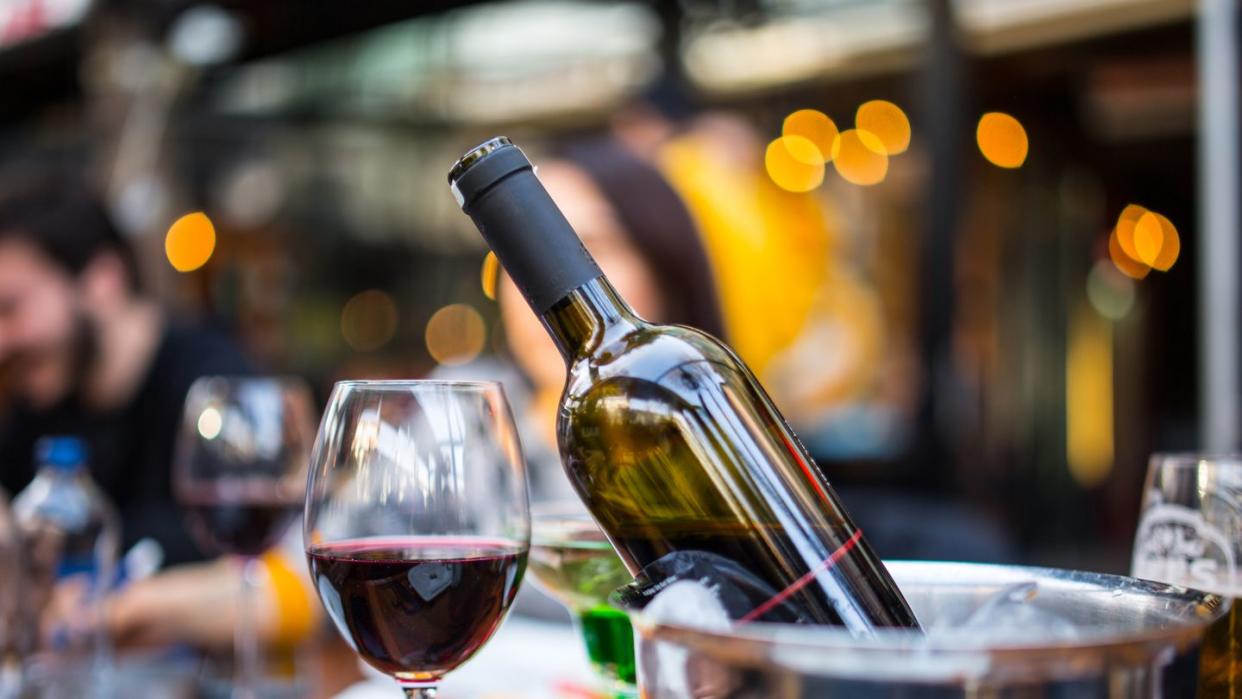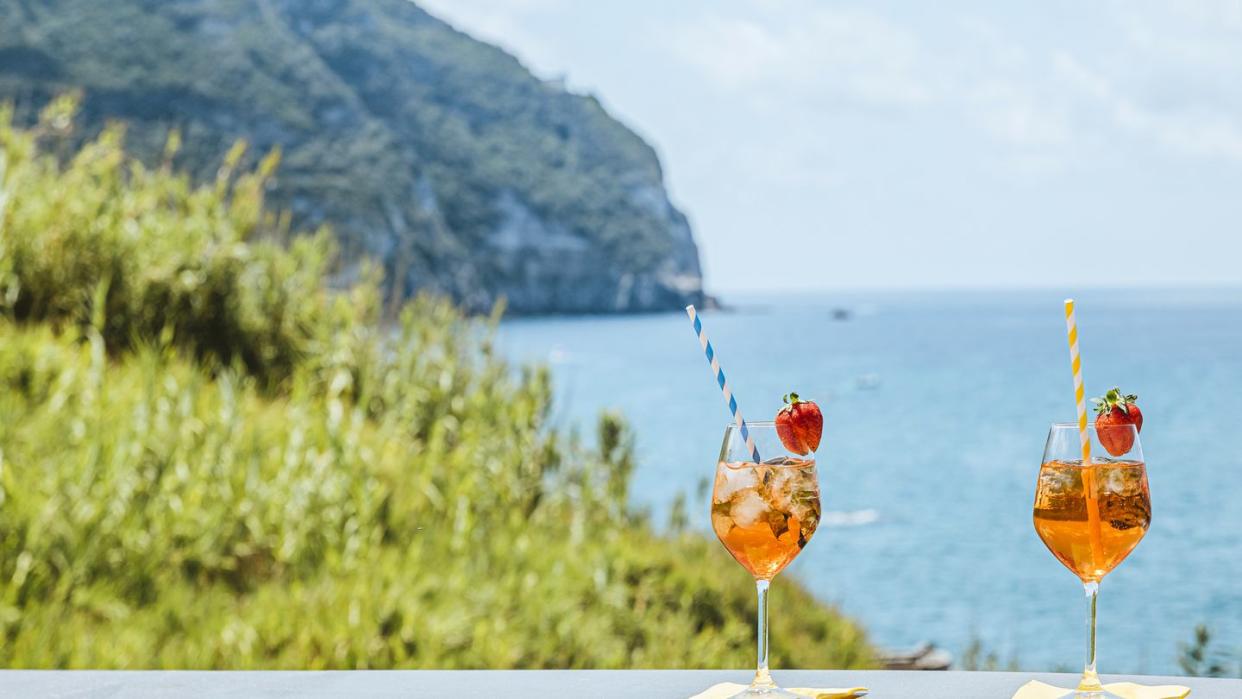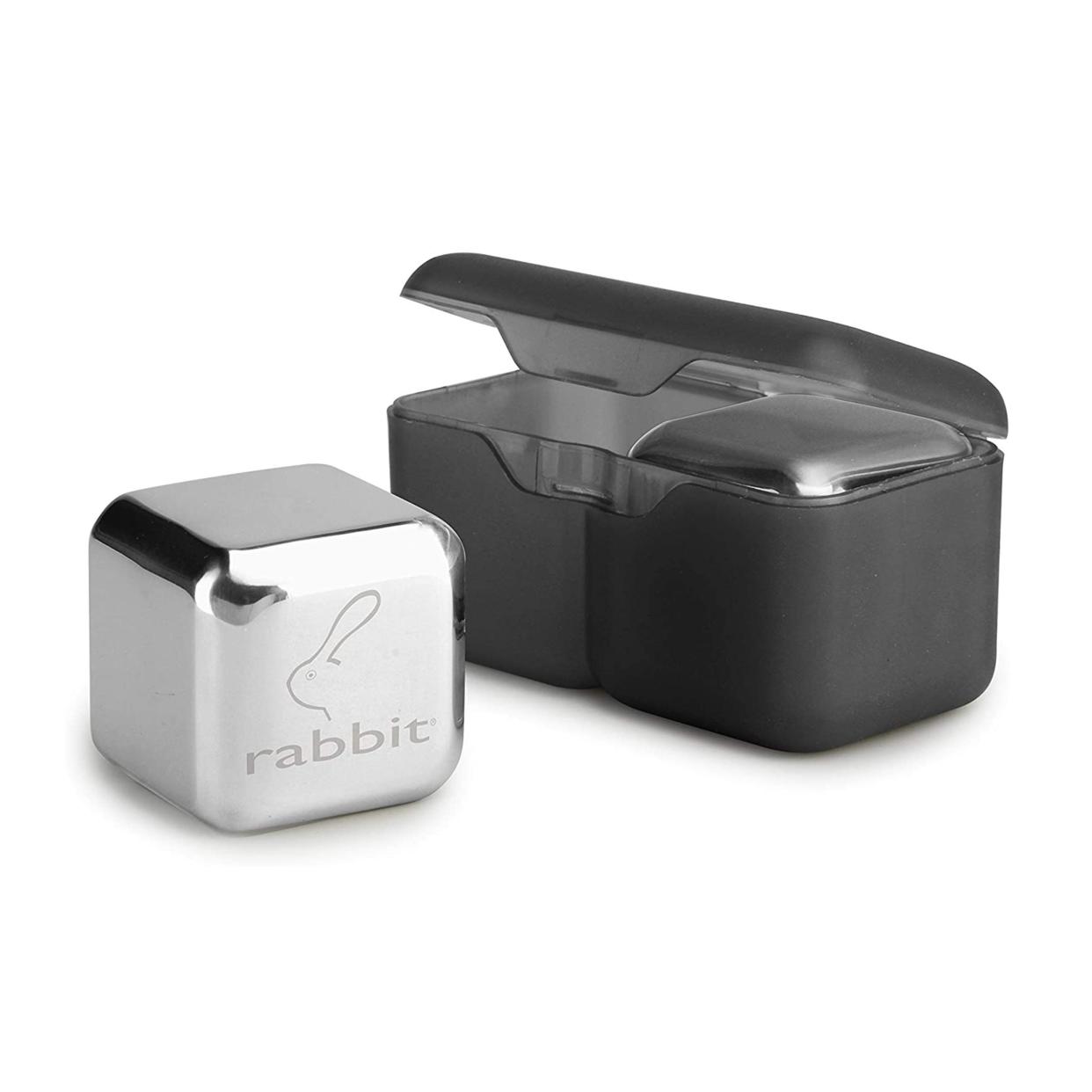Is It Rude to Put Ice in Wine? Here’s What Sommeliers and Etiquette Experts Say

"Hearst Magazines and Yahoo may earn commission or revenue on some items through these links."
As covered in our guide to 12 timeless table manners everyone should know, napkin use, utensil choice, the rotation of shared dishes and other seemingly small details can make a big difference in terms of your decorum. Stray from the recommended path and you’re not necessarily rude, per se, but proper etiquette can help you earn bonus points from the host and set a good example for your fellow diners.
One common food and drink etiquette-related scenario was brought onto our radar by none other than Martha Stewart. The entertaining maven told Stephen Colbert in 2022, "I was talking to a lot of vintners in France and Italy, and they all approve of ice in the white wine and the rosé.”
Then in July 2023, Stewart ignited a social media firestorm when she shared a video that demonstrated how to serve Martha’s Chard from 19 Crimes wine. “Add a few ice cubes for an extra chill,” she recommends, as the video shows a hand filling a glass with a pour of chardonnay, then topping things off with ice cubes gently dropped in via tongs.
Feedback ranged from “😭😭😭😩 the ice 🧊” and “never put ice in wine 🤦🏽♀️” to “I’ve done that always! Especially on a hot 🥵 day” and “I’ve seen ice in wine in Italy a lot.” One fan even swears by this strategy so much, she calls her signature drink “wice” (aka wine on ice).
Since this chilled drink strategy seems to be quite the hot topic, we tapped etiquette and wine professionals to spill about whether ice in wine is okay or a “no way!”.
Is it Rude to Put Ice in Wine?

According to Dino Borri, a New York City-based global vice president of Eataly, “It’s not necessarily ‘rude’ to put ice in wine, but it’s not a suggested way to consume it.”
However, the answer isn’t that cut and dry. Wine is like art, adds Lisa Mirza Grotts, a San Francisco, California-based certified etiquette expert and the founder of the Golden Rules Gal. And by that, she means that the taste is in the eye of the beholder.
As a general rule in the world of wine, adding ice is typically considered a breach of etiquette, especially when it comes to high-quality, aged wine or sparkling wines. Ice can dilute the flavors and aromas that the winemaker carefully crafted.
Ideally, the wine should be served at the appropriate temperature, says Jacqueline Whitmore, etiquette expert and the founder of The Protocol School of Palm Beach, Florida.
“I wouldn't recommend adding ice to wine to make it cold; it should reach the correct temperature for drinking when chilled in a wine refrigerator or cellar. If necessary, you can add ice around the bottle in an ice bucket to further chill it, rather than adding ice into the wine itself,” Borri says.
As a refresher, here are the ideal serving temperatures for wine:
Sparkling wines: 45°F
Light-bodied whites: 45° to 55°F
Light-bodied reds: 55° to 60°F
Full-bodied whites: 55° to 65°F
Full-bodied reds: 60° to 65°F
Fortified wines: 62° to 65°F
“In professional settings, such as a fine dining restaurant or a wine tasting event, it's customary to serve wine at the appropriate temperature without the need for ice. However, exceptions exist for certain types of wines, occasions and personal preferences,” Whitmore explains.
When in doubt—and when in public—go without, our experts agree. That being said, “there are instances where it's deemed acceptable and even preferred,” Whitmore admits.
When It’s Acceptable to Put Ice in Wine

When it comes to serving wine with ice at home and enjoying ice in wine while abroad, the etiquette becomes more flexible and tailored to an individual’s preferences.
At Home
As a host, your goal is to ensure that people who enter your home are comfortable and satisfied—not necessarily strictly adhering to etiquette guidelines.
“If a guest expresses a preference for wine with ice, it's considerate to accommodate their request,” Whitmore says. “The primary goal is to enjoy the wine in a relaxed environment where the focus is more on socializing and less on following traditional etiquette rules.”
This is especially relevant for gatherings in casual settings (such as picnics, potlucks and barbecues) or soirées in warm weather.
“In regions with warm climates, it's not uncommon to add ice to white or rosé wines to keep them refreshingly cool, especially during the sweltering summer months,” Whitmore says.
Offer the wine at the appropriate temperature and if you’re asked for ice, provide a bucket and set of tongs on the side. This way, each person can adjust the wine's temperature to suit their preference.
For bonus points, offer large “whiskey” ice balls or cubes which melt at a slower pace, or set out some of the steel or stone non-melting “ice” cubes which give the illusion of ice—while still making sommeliers happy, Grotts suggests. Or try freezing grapes, which can double as cooling cubes without dilution.

Rabbit Whiskey and Beverage Jumbo Chilling Stones Set
amazon.com
$19.99
Overseas
For some cultures, pairing ice and wine is the norm.
“For example, in France, you can enjoy ice in your rosé à la piscine, which translates to ‘at the swimming pool,’” Borri says. “Or in Spain, you can drink wine with ice in a cocktail such as sangria or tinto de verano,” which is an easy cocktail served over ice made with equal parts lemon-lime soda and red wine. Wine spritzes—a blend of sparkling water and wine—often come served with ice and a straw.
As Stewart suggested, many wine professionals in other countries don’t turn up their noses at ice in wine, especially white or rosé during peak summer. If you’re unsure what the local custom is, take a peek around and tune into what other imbibers are up to. This can give you a good clue about the best practice.
The Bottom Line
“Ultimately, the most important factor is personal preference. If someone enjoys their wine with ice and it enhances their enjoyment, then it's acceptable to do so in the privacy of their home or at a gathering where it's known and accepted,” Whitmore says.
Most sommeliers recommend enjoying wine at the correct temperature sans ice at restaurants and fancier affairs. That doesn’t mean you should avoid ice wine, though. This is a dessert wine that’s produced in cold climates, Borri explains, where the grapes are frozen on the vine ahead of harvesting. The result is a highly concentrated, sweet wine that’s ideal for enjoying after dinner.
You Might Also Like






